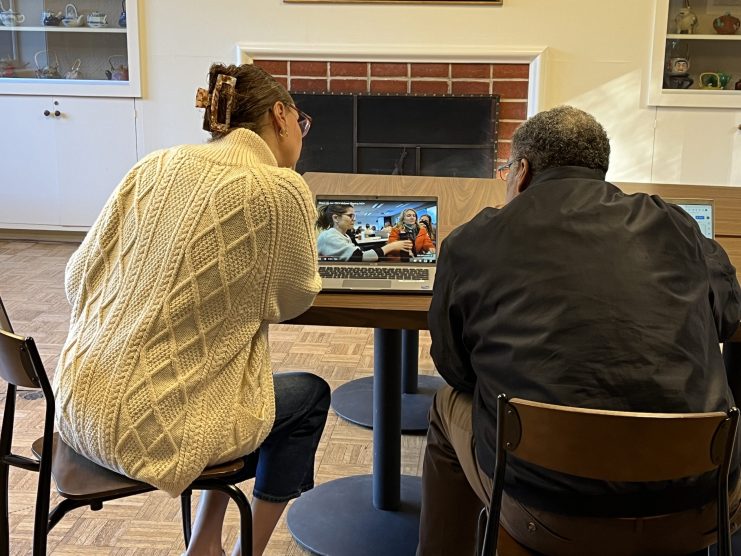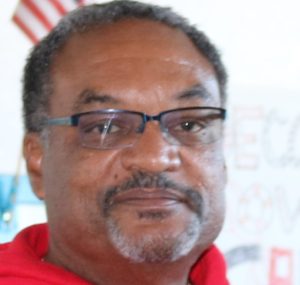
Leading From Behind: Reflections from the District
In the fall of 2021, I was appointed to my first district-level position as a Director of Secondary Education. After fourteen years of experience as a site administrator; seven years as a high school assistant principal and seven years as a middle school principal, I was confident that my background and experiences as a site administrator made me a perfect fit for my new role. Coming into the district office, I knew my duties were not going to be the same as a site administrator. As a site administrator, I was a “ middle manager”, my responsibility was to operationalize the vision of the district and my school site. As the “District”, we keep the vision.
As a site administrator, I worked with a number of district administrators and had both positive and negative experiences. I worked with district administrators, who were critical friends, and thought partners, and supported me as a site leader. On the other hand, I worked with district administrators who were managers whose aim was to carry out the district vision without considering the nuances of my school site and district. As a new district administrator, I believed that leading from behind was the way to lead. Lao-Tzu describes leading from behind through this quote, “A leader is best when people barely know the leader exists…when the leader’s work is done, and the aim fulfilled, the people will all say: We did it ourselves.”’
As a new district leader, I was unsure how to lead from behind at the district level. How could I create conditions of adult learning where everyone has an equal voice and are an integral part of the decision-making process? What conditions did I need to foster that would build a culture of adult learning and distributed leadership? As I entered into my first year as Director of Secondary Education, my goal was to listen, learn, and build relational trust with the principals. I believed the more I understood about principals’ experiences, their school sites, and the history of the district, the easier it would be for me to “connect the dots,” and support principals in “Doing it Themselves.”
During my first year as Director of Secondary Education, my goal was to build relational trust with my administrative colleagues by listening and learning. Through listening and learning, I began to recognize how hidden curricula were operating within the hierarchical system of our organization. Hidden curricula are unstated, norms, values, and beliefs that operate among crowds of people, and determine how power and praise are gained within the crowd, (Jackson, 1968). Hidden curricula can have both positive and negative impacts on school organizations. I realized in order to continue to build a culture of adult learning and distributed leadership within the district, I needed to unpack the barriers that negative hidden curricula create.
Lead by Learning has provided thought partnership as I work to accomplish the vision of fostering leaders’ capacity in developing cultures of adult learning and distributed leadership within their school sites. As part of my work with Lead by Learning, I developed and refined a theory of change to support our district in becoming a community of adult learners who will build a culture of distributive leadership. My theory of change is below:
If I create space for leaders to evaluate data about the negative effects of hidden curricula and how it impacts adult learning and distributed leadership, then leaders will have a deeper understanding of their personal values and beliefs that hinder transformational change. This understanding will improve leadership systemwide, and result in increased student achievement.
Entering into the 2022-23 school year my plan was to continue to build relational trust with site leaders by collecting “street data” to deepen my understanding of how hidden curricula operate within our school district. I believe with a deeper understanding of how unstated values and beliefs operate within the hierarchy of the district, I will be in a better position to navigate the political landscape of the district to actualize the vision of creating conditions that will support principals in fostering cultures of adult learning and distributed leadership at their sites.
During the 2023-2024 school year, I plan to continue exploring the intersections of adult learning, distributed leadership, and hidden curricula through the questions below;
- As a district leader, how much power can I “give up”, and still maintain the hierarchical systems and structures within the system?
- What are site and district management’s understanding of hidden curricula?
To be continued …

Vernon L. Walton Jr. began his journey as an educator in 2001 as a science teacher in Pittsburg California. In 2007 he earned his Master’s Degree and Administrative Credential from the University of California Berkeley Principal Leadership Institute (PLI, Cohort 7). Upon completion of PLI he was appointed as an Assistant Principal at Berkeley High School and served for seven years. In 2014, he was appointed principal at John Muir Middle School in San Leandro Unified School where he served for seven years. During his tenure as principal, he earned his doctorate in Educational Leadership for Social Justice from California State University East Bay. Currently, Dr. Walton is the Director of Secondary Education in Alameda Unified School District, and continues to explore the focus of his dissertation “Hidden Curricula.”
